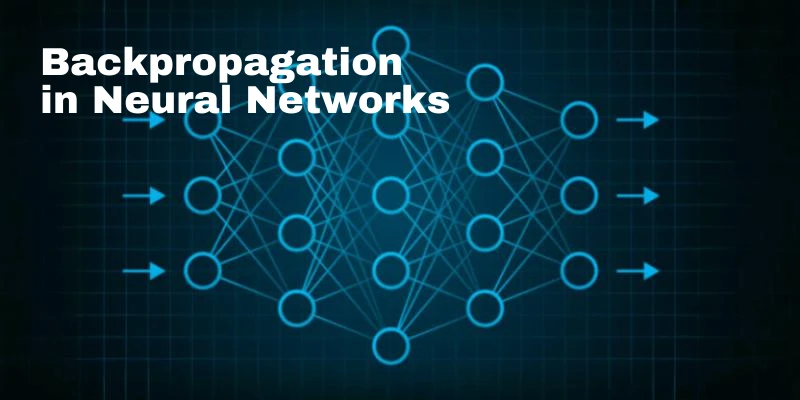
Backpropagation is a fundamental concept in the world of Artificial Intelligence (AI) and machine learning, playing a pivotal role in the training of neural networks. It relates to the process by which a neural network adjusts its weights and biases. This helps minimize the difference between its predictions and the real results. For those looking to dive deeper into this concept, enrolling in an Artificial Intelligence Course in Hyderabad at FITA Academy can offer you an in-depth insight into backpropagation and its uses. In this blog, we’ll explore how backpropagation works, why it is essential, and how it contributes to improving neural network performance.
What is Backpropagation?
The optimization technique known as “backward propagation of errors,” or backpropagation, is employed in the training of artificial neural networks. The process helps the model learn from its mistakes by adjusting its parameters. This ensures the model can make more accurate predictions in the future. In essence, backpropagation is the key mechanism that allows a neural network to improve over time. This happens as the network processes more data.
The idea is centered on lowering the loss function, which evaluates the difference between the predicted result and the real result. A lower loss function indicates a more accurate model, and backpropagation helps to minimize this loss by updating the network’s weights. To gain a deeper understanding of this process and other AI techniques, joining an AI Course in Ahmedabad can provide hands-on experience and expert guidance on optimizing neural networks for better performance.
How Backpropagation Works
Backpropagation operates in two main phases: the forward pass and the backward pass. Let’s break these down.
Forward Pass
The neural network receives the input data during the forward pass, and the data moves from the input layer to the output layer layer by layer. Every neuron within the network calculates a weighted sum of its inputs, applies an activation function, and sends the outcome to the subsequent layer. At the end of this process, the network generates an output, which is compared to the actual output to compute the error or loss.
Backward Pass
Once the error is calculated, backpropagation begins with the backward pass. This step involves calculating how much each weight contributed to the error. The goal here is to figure out how to change the weights to reduce the error. To master these techniques and gain in-depth knowledge of AI, taking AI Courses in Delhi can help you build a solid foundation in backpropagation and other core AI concepts, enhancing your skills for real-world applications.
The error moves backward from the output layer to the input layer, one layer at a time, employing the chain rule from calculus. This chain rule allows the network to adjust the weights of each layer based on the gradient of the loss function concerning those weights. By making small adjustments to the weights, the network gradually reduces the error.
The Role of Gradient Descent
While backpropagation calculates the error and determines the necessary adjustments to the weights, gradient descent handles the updates. It is the algorithm responsible for optimizing the weights based on those adjustments. Gradient descent operates by moving in the direction opposite to the gradient of the loss function. This helps identify the optimal weights that minimize the error.
The size of the weight adjustment is controlled by a parameter called the learning rate. If the learning rate is excessively high, the model might bypass the optimal weights, whereas a learning rate that is too low could hinder the speed of the learning process. Finding the right learning rate is crucial for efficient training. To obtain a more comprehensive grasp of this idea and other important subjects, signing up for AI Courses in Lucknow can assist you with the knowledge and hands-on skills necessary to enhance your models efficiently.
Why is Backpropagation Important?
Backpropagation is a crucial step in training deep neural networks, enabling them to learn complex patterns and make accurate predictions. A neural network would be useless for tasks like image recognition, natural language processing, or recommendation systems without backpropagation, which would prevent it from enhancing its performance.
Backpropagation enables the network to modify its parameters step by step, guaranteeing that the weights are fine-tuned progressively. This iterative process is what makes neural networks capable of handling large amounts of data and learning from it, even when dealing with complex, high-dimensional problems.
Challenges of Backpropagation
Although backpropagation is powerful, it comes with its challenges. A frequent challenge is the vanishing gradient problem, which happens when the gradients diminish significantly as they are passed back through the layers. This problem is particularly prevalent in deep neural networks and can slow down or even halt the learning process.
The overfitting problem is another challenge. It occurs when the model fits the training data too closely and fails to generalize to new, unseen data. Methods like dropout and L2 regularization are commonly used to address this problem.
Backpropagation is the engine that drives the learning process in neural networks. It allows AI models to improve over time and make better predictions. By calculating errors and adjusting weights, backpropagation fine-tunes the model’s parameters. This enables it to understand and learn complex patterns in data. With the ongoing advancement of AI, backpropagation continues to play a crucial role in creating more intelligent and capable machines. To learn more about backpropagation and other crucial AI techniques, enrolling in an Artificial Intelligence Course in Chandigarh can provide you with a comprehensive learning experience and the skills to apply these concepts in real-world AI projects.
Understanding backpropagation is key for anyone diving into machine learning and AI. It serves as the foundation for many modern AI applications. Whether you’re building a deep neural network for image recognition or natural language processing, mastering backpropagation is essential. It gives you the tools to create more accurate and efficient models.
Also check: The Role of Humans in an AI-Driven Future
